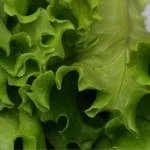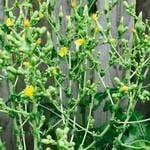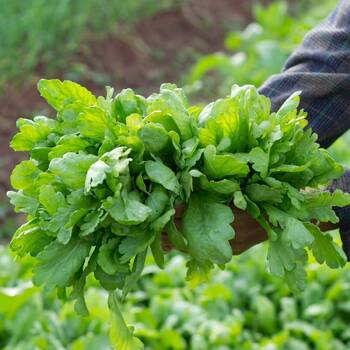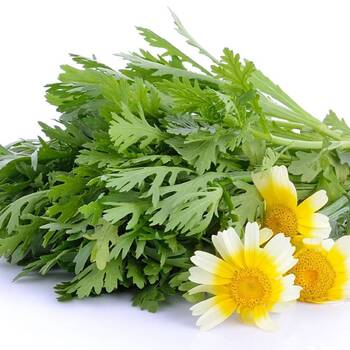
How to Grow Garland Seeds
Grow Guide #2271
Family: Asteraceae
Binomial name: Glebionis coronaria
Life Cycle: Annual
This 'How to Grow' guide details everything a home gardener needs to know to plant, grow and care for Garland (Glebionis coronaria).
When to Sow Garland Seeds
Garland is a warm season crop. Use the table below to identify the best time of year to sow garland seeds in your climate.
| JAN | FEB | MAR | APR | MAY | JUN | JUL | AUG | SEP | OCT | NOV | DEC | |
|---|---|---|---|---|---|---|---|---|---|---|---|---|
| Cool | ||||||||||||
| Temperate | ||||||||||||
| Sub-Tropical | ||||||||||||
| Tropical | ||||||||||||
| Arid |
Preparation
Garland plants are best grown in full sun. Choose a location that will receive at least 6 hours of full sun each day.
Garland plants need a well drained soil enriched with plenty of organic matter. Prepare soil by weeding it thoroughly, digging it over to loosen it and adding aged animal manure or compost. Keep the area free of weeds until planting. Learn more about preparing soil for planting here.
Garland plants can be grown in containers. If possible choose a variety that’s recommended for container growing. Use a good quality potting mix and make sure your container is large enough for mature plants; a minimum of 20 litres is recommended for garland. During the growing season, keep in mind that container grown plants may need additional fertiliser to encourage healthy growth.
How to Sow Garland Seeds
Garland seeds do not require any treatment (eg soaking, stratification) before sowing.
Garland seeds can be sown directly into the garden OR seedlings can be raised in trays or other containers and transplanted to the garden once established.
Sow Direct
- Sow seeds directly in the garden 6mm deep and 40cm apart, with rows 40cm apart.
- Keep soil moist but never wet or dry.
- Seeds should germinate in around 7-10 days at a soil temperature of 15-22°C.
- Young seedlings will need protection from pests, pets and weather until they are established.
Raise Seedlings
- Fill trays, punnets or jiffy pots with a good quality seed-raising mix, or use soil starter pellets.
- Sow seeds 6mm deep.
- Keep soil moist but never wet or dry.
- Seeds should germinate in around 7-10 days at a soil temperature of 15-22°C.
- Transplant seedlings to the garden once they have their first true leaves and are large enough to handle (usually 5-10cm tall).
- Plant out, spacing plants 40cm apart, with rows 40cm apart.
Tip: Garland seeds can also be sown in the less formal ‘scatter seed’ method. Simply roughen the soil, scatter seeds evenly over the surface, then smooth the soil over lightly to cover the seeds.
Optional: In cool climates garland seeds can be sown indoors 6 weeks before the last expected frost. Grow them in a warm position with plenty of natural light.
How to Grow Garland
Garland plants may need watering during the growing season. Water when the soil is dry about 5cm below the surface (test this by scratching away a little soil with your finger). Water deeply in the early morning or late afternoon. Avoid watering the leaves of plants to avoid fungal diseases. Learn more about watering here.
If soil was well prepared no extra fertiliser should be necessary. In poor soil or to give your plants an extra boost, application of a high-nitrogen fertiliser or one formulated for leafy greens or herbs can be beneficial:
- Apply slow release fertiliser at the recommended rate when transplanting or when seedlings are 5-10cm tall.
- Apply liquid fertiliser at the recommended rate and frequency during the growing season.
Optional: To give plants room to grow, thin seedlings when they are large enough to handle. Pull out any weak or small seedlings so plants are spaced about 40cm apart.
If growing garland for cut flowers, use sharp snips or secateurs to cut the longest stems possible, removing the lower leaves and placing the stems immediately in a clean bucket of water. Learn more about cutting and conditioning homegrown flowers here.
How to Harvest Garland
Garland should be ready to harvest in approximately 30-50 days.
Leaves are ready to harvest when they are large enough to eat, and can be harvested as needed. Harvest leaves by pinching off the outer leaves, leaving some on the plant for future growth. Whole plants can also be harvested by cutting the stems at the base of the plant. Eat garland leaves as soon as possible afer harvesting. Store leaves short term in a perforated plastic bag in the fridge.
Edible flowers only - Flowers are ready to harvest when they are fully open. Harvest flowers by cutting the stem to separate the flower from the plant. To eat garland flowers fresh, pull off individual petals as the centre disc can taste bitter. Alternatively, whole flowers can be dried by spreading them on a wire rack and leaving them to dry completely. Store dried flowers in an airtight container.
Common Problems when Growing Garland
Like all plants, garland is susceptible to some pests, diseases and other problems. Below is a list of the most common problems gardeners encounter when growing garland plants:
 Bitter taste can be caused by plants growing too slowly, suffering a setback in growth or being harvested too late. Enrich soil with aged manure before planting, ensure plants are watered deeply and regularly, and harvest when they are young and tender.
Bitter taste can be caused by plants growing too slowly, suffering a setback in growth or being harvested too late. Enrich soil with aged manure before planting, ensure plants are watered deeply and regularly, and harvest when they are young and tender. Bolting is when a plant prematurely flowers and goes to seed. Bolting can be caused by a period of extreme weather. Avoid sowing seed until after the danger of frosts has passed or in very hot weather. Water plants regularly and deeply in hot weather to prevent them suffering heat stress.
Bolting is when a plant prematurely flowers and goes to seed. Bolting can be caused by a period of extreme weather. Avoid sowing seed until after the danger of frosts has passed or in very hot weather. Water plants regularly and deeply in hot weather to prevent them suffering heat stress. Slugs and snails are molluscs that feed on tender leaves and shoots, mostly at night, leaving slimy trails behind them. Control them by removing their hiding places, keeping free range poultry, collecting them by torchlight or by placing traps. Read more about slugs and snails here.
Slugs and snails are molluscs that feed on tender leaves and shoots, mostly at night, leaving slimy trails behind them. Control them by removing their hiding places, keeping free range poultry, collecting them by torchlight or by placing traps. Read more about slugs and snails here.


.png)




